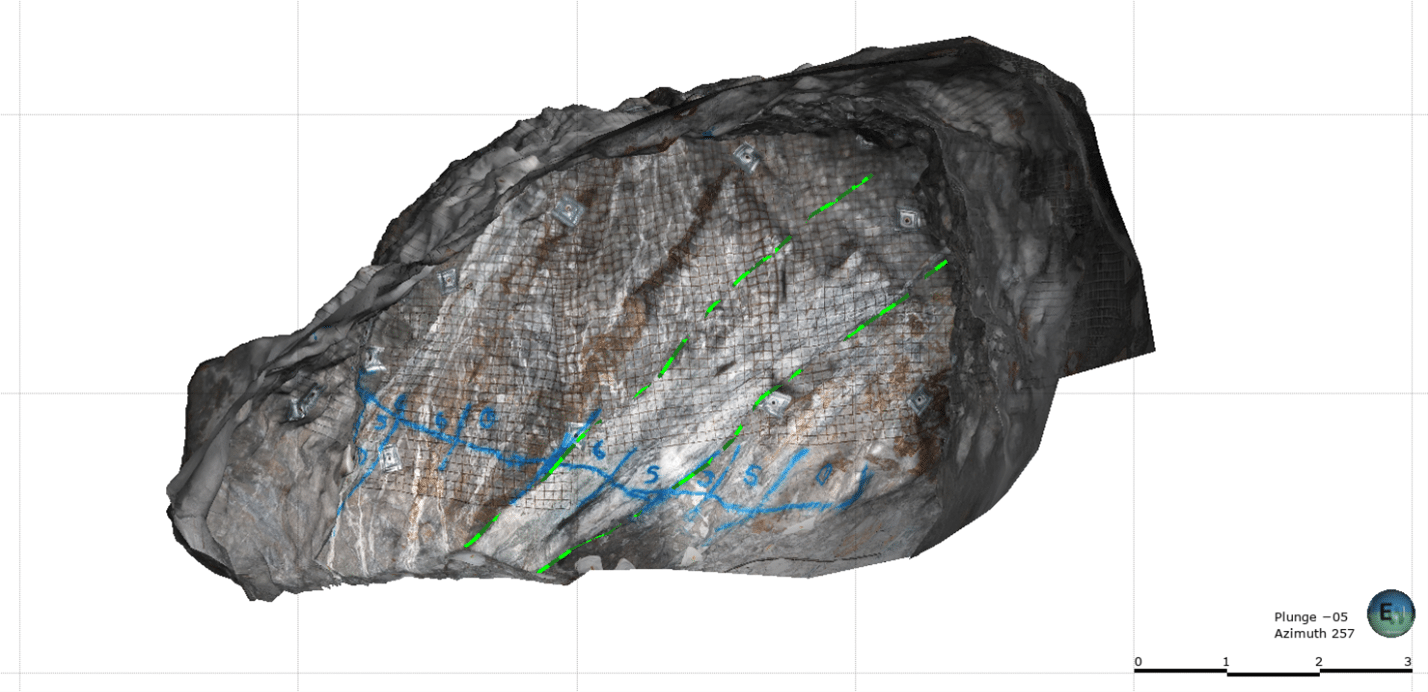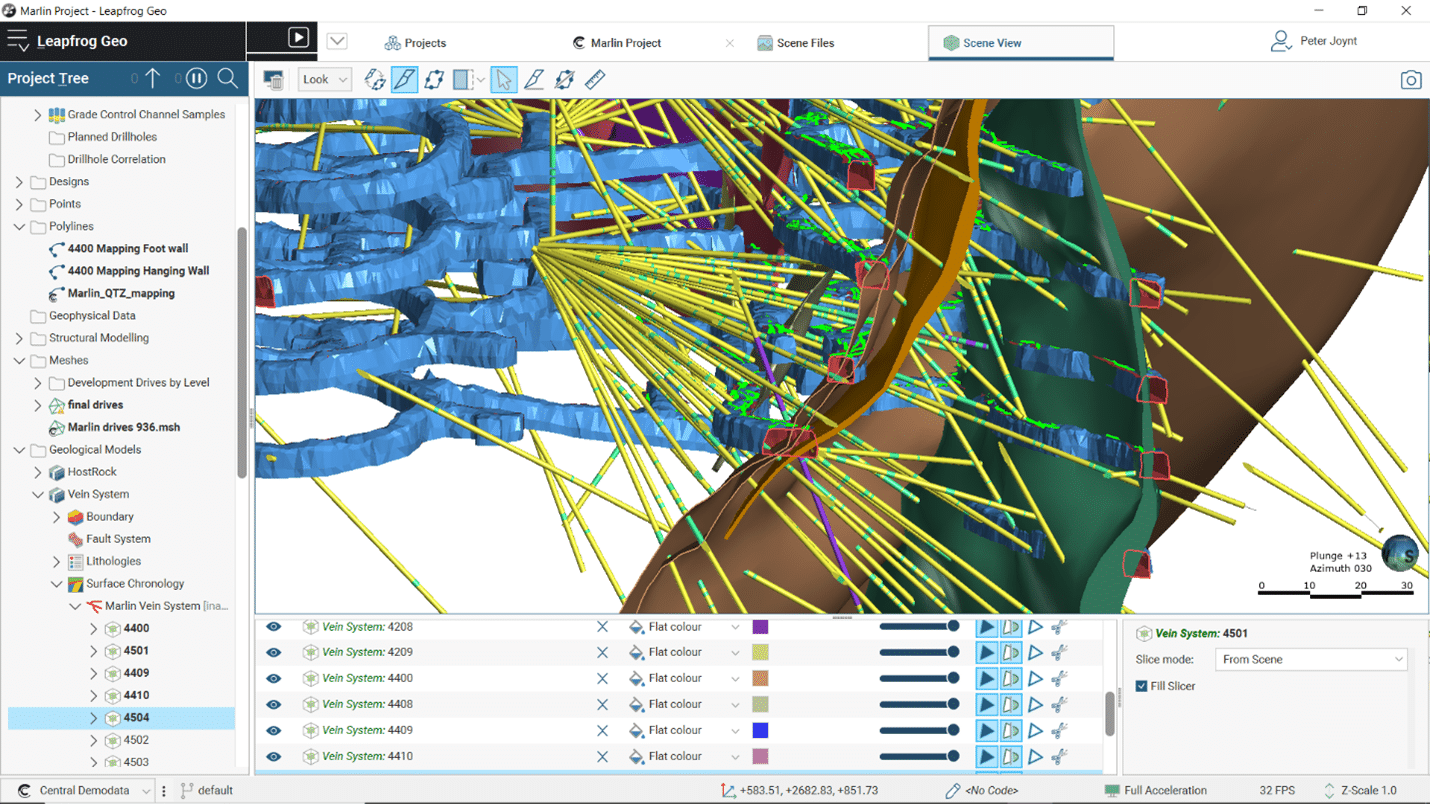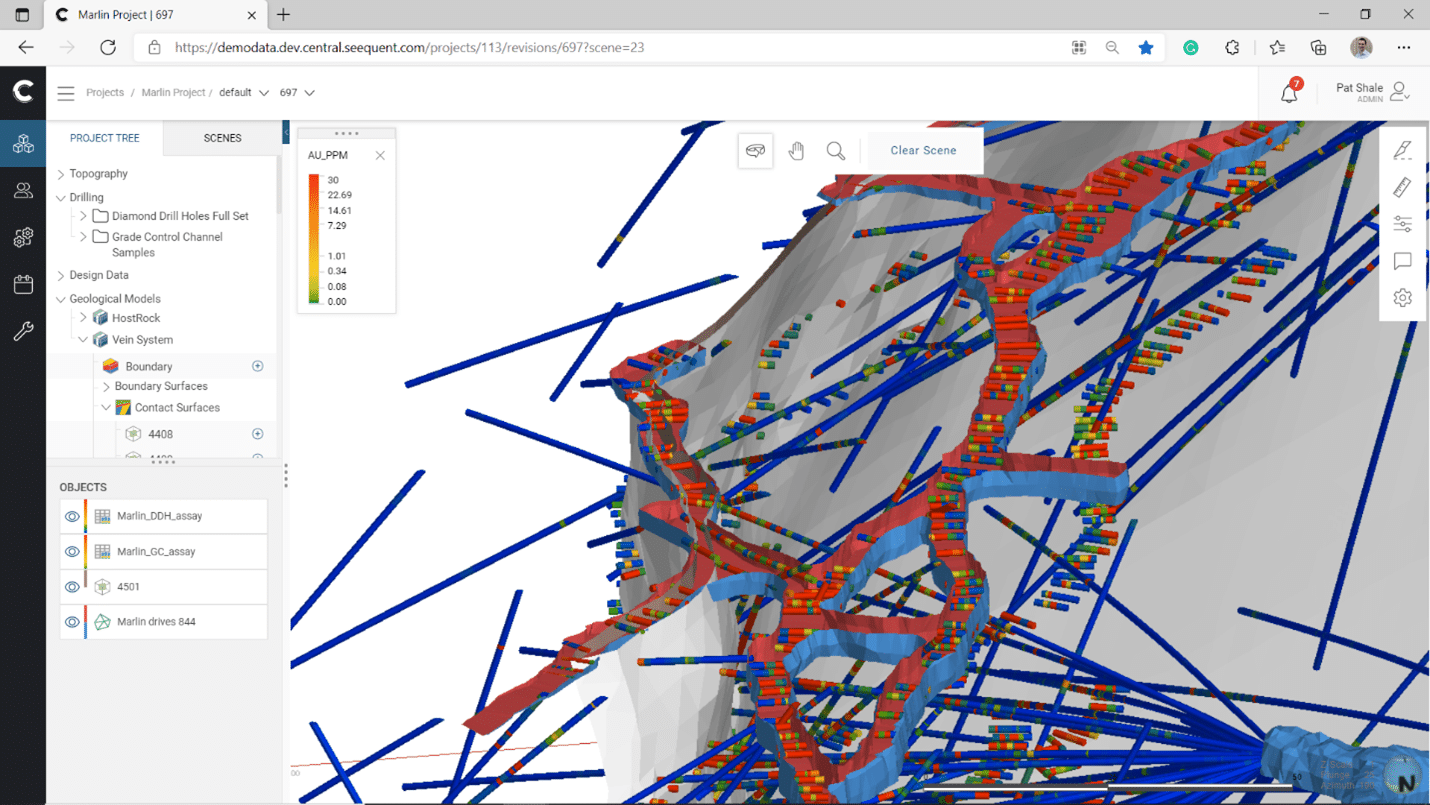In case studies, we often focus on problems followed by the solutions, but in the case of OceanaGold, they showed us how applying the best solutions can prevent problems from arising in the first place. We talked to the mining geologists at OceanaGold’s Waihi site to find out how they developed their optimised way of working.
About the OceanaGold Waihi site
OceanaGold’s Waihi site dates back to the 1800s when gold was first discovered near the Coromandel Peninsula. Located on the northwest area of the Bay of Plenty on New Zealand’s North Island, Waihi is a world-class epithermal gold deposit and still a highly viable gold-producing operation.
The relatively new Martha Underground project includes an area directly under the current Martha open pit and the south wall, as well as the Rex vein under residential property to the south of the pit. The project is expected to have a mine life of at least 10 years. Senior mine geologist Abe Whaanga and Underground project geologist William Vigor-Brown are behind a big part of the geological effort for the Martha Underground project.
The systems support the workflows, not the other way around
In a lot of mining operations, the geologists are stuck with the workflows dictated by the systems they use. But for Abe and William, this was too linear and limiting, so they’ve sought tools and processes from Seequent, to allow for dynamic workflows and flexible data updates.
Abe explains, “I’ve always wanted a way so that you could get to the end and just add in extra data without having to go all the way back to the start. And that’s the main benefit of using Leapfrog Edge, you can keep working while you wait for the last bit of data to come in, such as the last few channels for a single drive.”
But it’s not just a single grade control solution that has changed things. They have taken it several steps further and set up a dynamic multisystem workflow that integrates 3D photogrammetric imagery data with implicit modelling techniques, based on innovations proposed by Richard “Tick” Knight . Between them, Abe and William oversee updates to the geological model in Leapfrog Geo, and in parallel, generate grade control models in Edge, and manage data updates and model versions via Seequent Central.
Describing the workflow from start to finish, William explains:
The mine geos are down the hole collecting ore control data in the form of a face channel sample. They also take a 3D point scan of that face. Each channel is then registered on the scan in the form of a drill hole in the face (photogrammetry data). When incorporating this data into the model we use interval selection to pick up the boundary of the vein from the channel and interpret hanging wall and footwall contacts from the photogrammetry using lines.

A photogrammetric textured mesh, with polyline contacts along the hanging wall and footwall of the vein
For the OceanaGold team, with daily updates to the ore control data and the ability to rapidly reconcile new photogrammetry information with the 3D model, the team has a virtual continuous view of the site. This enables them to monitor daily production performance, communicate to miners, engineers and geologists involved in operational planning, and report back to the business. They can confidently generate interim models that allow adjacent teams to run scenarios even before a current drive is completed.
It’s because Leapfrog’s implicit modelling supports rapid and dynamic updates that new face and channel sample data can be incorporated into the updated model in just minutes. This means all available mine data can be used daily, leading to an enhanced geological understanding and ultimately to better ore/waste decisions.
Set up for parallel modelling, fast estimates, and continuous data updates
Abe and William work together like a well-oiled machine. One of the reasons is that they have separated direct dependencies between geological model updates and the grade control estimates and replaced them with dynamic project links via Central. This means they can work in parallel with connected, but not dependent models.
As a team they run estimates on the entire domain, and then for a pure grade control estimate, they look at the stope between levels. “We really hone in between those levels and validate to make sure it’s as accurate as it can be.” Once the wireframes are validated, they upload the geological model to Central, update data, refresh the geological model, then finally refresh the linked grade control model, and run estimates.
This clear and efficient workflow makes estimation faster than ever. Abe explains that it took time to set up the domain estimators, first and second passes, optimised block model sizes, and sample filtering. But once set up, William adds, “it can be quite fast from uploading our geological model to running that grade control estimate.”
Abe describes how they work as a team. “Willi and I are often throwing models back and forth to each other, sometimes two, three models a day. So, I might do some work, upload it to Central, he’ll grab it while I pull a different one down, so we might have one geological and maybe three or four grade control models all on the go at the same time.” This level of flexibility with rapid circulation sounds like it could get chaotic, but the team has it well controlled through Central.

A dynamically created underground grade control model in Leapfrog Geo
Building trust in model versions through Central control
When the OceanaGold team first adopted Central, they thought of it more as a version control system for models but have since realised how integral it is to the way they work. Abe explains, “We don’t even store any of the backups of our projects anywhere else, so we only have very limited data on our files servers for delivering output wireframes and block models to the engineers and everything else just sits in Central. If we need to go back to anything to find out whether there’s any errors, we just go back a few versions, download it, have a look, delete it, and move on.”
This is a big departure from how the team used to work. Previously, they kept a lot of models around “just to be sure” a version didn’t get lost. But when accessing them, they were unsure of the version or currency. To maintain reliability, they often worked solo on a model, finalising and checking each other’s work only after they had finished.
They still do periodic backups of course, but Central’s model branching functions and clear timestamps have eliminated the need to manually track model versions, meaning the team can also work concurrently with confidence that each model is reliable.
”Without Central as we have it set up, we could not be doing what we're doing.
says Abe, adding that “it’s not just Dropbox for models.”
Getting ahead on scheduling and risk prediction from reliable interim models
There are other benefits to being able to create multiple model branches, according to Abe. “If I can generate 10 models, I can try different things and have a look at the outliers. I can examine nine different failures and pick the best one” By increasing scrutiny, Abe finds they can be a lot more conservative and accurate. The final model is also of a much higher quality, “because we’re satisfied that we’ve explored all the different avenues.”
Using interim models, the engineers at OceanaGold are also able to create different scenarios about scheduling and planning. For example, William explains, “if we haven’t finished a drive, but we’ve done three quarters of it because we are waiting for sample data from the lab, the production engineer can start designing based on the interim model. Once we give him the final, he’ll validate the earlier part of the design and finish off the last part. So, he can release stope designs ahead of time and get that little bit ahead of the schedule as well.”
For the broader business, the ability to test multiple model scenarios means that issues can be addressed quickly, and management can be given advanced warning about grade control risk and losses. “Rather than just tell the business ‘Surprise, we’ve lost 10,000 ounces’, we can say, ‘look, we’ve got an idea that we’re going to lose around 8,000’ and explain why.” Other teams and managers can then make decisions accordingly.

Channel samples and drilling along development drives, visualised directly in the web using Central
Digital leaps start with small steps
The OceanaGold geology team have worked hard to create successful and dynamic workflows that work for their teams and the business. But Abe and William are both humble about how they got there. “You have to accept that there’s better ways to do things. We didn’t develop all this on our own, a guy called Tick Knight introduced us to the photogrammetry process, but it took us about 18 months to even start to trial it.”
Their parting advice is aimed at operations that are reluctant to change.
”Always work towards the pursuit of better data, high-quality data, and turn it around faster no matter what process you're using.
But talk and collaborate with your peers about better workflows. Use new technology to work smarter. Just because it seems difficult, just start. It’s an incremental change that you need to do, you don’t need to do everything in one go. You’ve just got to work your way slowly to try and improve your processes.”
References:
[1] Knight, R 2017. 3D mine mapping – improving grade control and reconciliation in underground mines using photogrammetric imagery and implicit modelling techniques.





